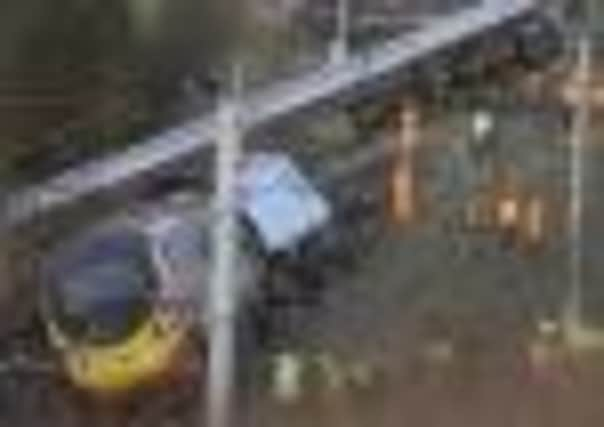‘300 tonnes of metal at 95mph does what it wants’


Iain Black, 50, was speaking at the hearing into the death of Margaret Masson, 84, from Glasgow, who died after the Virgin Pendolino London to Glasgow express train came off the rails on the West Coast Main Line near the Cumbrian village of Grayrigg at 8:12pm on 23 February, 2007.
All eight carriages of the Class 390 tilting train were derailed and 86 passengers and two crew injured as carriages crashed down the embankment.
Advertisement
Hide AdAdvertisement
Hide AdA subsequent Rail Accident Investigation Branch (RAIB) inquiry ruled that the “immediate cause” of the crash was that the train had gone over a “degraded and unsafe” set of points, known as Lambrigg 2B.
Mr Black, from Dumbarton, was severely injured in the crash, breaking his neck after the train “leapt into the air”.
Giving evidence on the second day of the three-week hearing at the inquest at the County Offices in Kendal, he said a 95mph train would take half a mile to come to a halt.
“Although I did not see the points – you can only see 15ft in front of you – had I noticed the points out of synch, I could not stop the train.
“With 300 tonnes of metal at 95mph it is going to go wherever it wants. I had no control.
“We stopped at 300m that night because we were hitting stuff.”
Mr Black said an automatic braking system was triggered within seconds of the derailment.
Keith Vernon, a track engineer for Network Rail who is trained in the investigation of derailments, told the inquest he was on site and made a preliminary assessment that the cause was faulty points within two hours of the crash.
Advertisement
Hide AdAdvertisement
Hide AdMr Vernon said that, armed with torches, he walked the length of the track for a visual assessment and focused on the Lambrigg 2B points.
“The first thing was it was apparent there was some damage and something did not look right,” he said.
Mr Vernon took photos, which have been shown to the jury, of broken brackets holding rails down, bolts not in their holes and “stretcher bars”, which should keep rails a set distance apart, also missing.
He checked further down the track where the train had come from, but there was no damage along that part of the line.
Mr Vernon arranged for the points to be covered with a tarpaulin to preserve evidence from the elements.
“The points should not have been in that state. There were defects throughout it,” he added.
Simon Kay, a rail engineer and accident inspector for RAIB, gave the jury a detailed technical overview of points systems, also known as switches, as they normally work.
A team of inspectors analysed the crash site for more than a week but “early on” realised the points caused the train to derail.
The hearing continues.